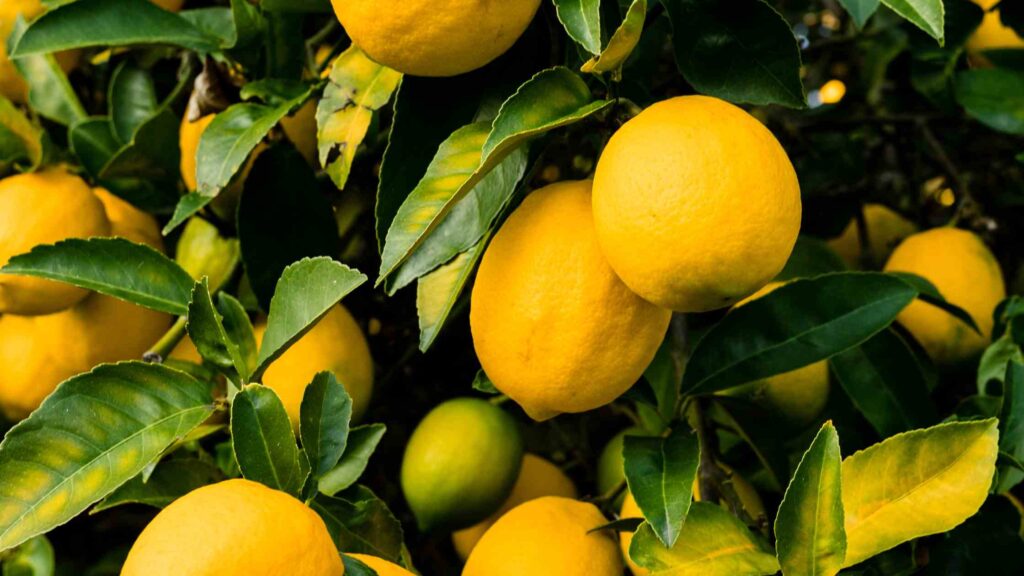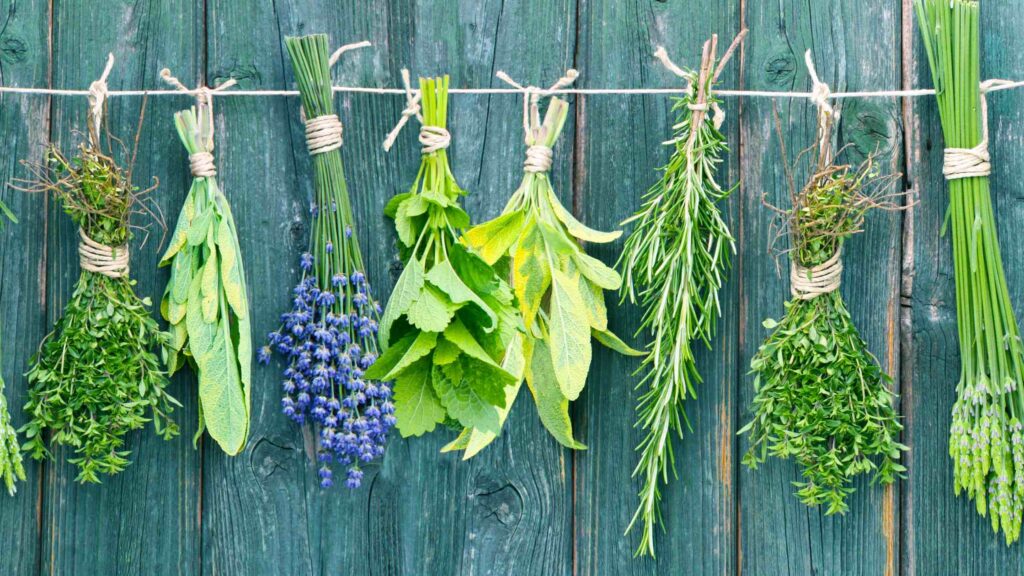In a world where synthetic antibiotics are losing their efficacy due to increasing resistance, the spotlight is turning towards the healing power of nature for various infections. Natural remedies derived from medicinal plants not only offer antibiotic properties but also come with a plethora of additional benefits. Cultivating these plants in your survival herb garden provides a sustainable, accessible, and holistic approach to healthcare. Let’s explore the advantages of turning to natural remedies and discover a list of diverse and easy-to-grow antibiotic medicinal plants for your survival garden so that when SHTF, you’re ready.
Why Standard Antibiotics aren’t always the answer
I’m not saying there is never a reason to use antibiotics. There is a time and a place for them. However, one of the primary contributors to antibiotic resistance is the overuse and misuse of these medications. Inappropriate prescribing and agricultural use in livestock have led to widespread exposure of bacteria to antibiotics. The constant assault has given rise to resilient strains that can withstand the drugs designed to eliminate them.
Not to mention, the overuse of antibiotics can lead to the onset of other health issues, significantly affecting your gut flora.
Thankfully, many powerful antibiotics in herb or plant form can provide many healing benefits while remaining harmless to your body.

Why you should incorporate antibiotic property medical plants in your survival garden
Survival gardeners see the need to incorporate medicinal herbs and plants in their gardens not only for when SHTF, but to have them as a go-to remedy for cold symptoms, autoimmune issues, infections, and much more. They also attract beneficial insects, deter pests, and add diversity to your garden’s ecosystem.
When you have a multipurpose medicinal herb garden, you can be sure you have what you need if medical supplies and drugs are hard to come by and antibiotic plants are a must.

Benefits of Natural Antibiotic Remedies:
- Reduced Antibiotic Resistance: Synthetic antibiotics can contribute to the development of resistant strains of bacteria. Natural remedies, on the other hand, often contain a complex mix of compounds that make it challenging for bacteria to develop resistance.
- Gentle on the Body: Many natural antibiotics have fewer side effects compared to their synthetic counterparts. They work in harmony with the body, targeting harmful microbes while preserving beneficial bacteria in the digestive system.
- Rich in Phytochemicals: Medicinal plants are abundant sources of phytochemicals – naturally occurring compounds with various health benefits. These compounds contribute not only to antibiotic properties but also to antioxidant, anti-inflammatory, and immune-boosting effects.
- Holistic Healing: Natural remedies often simultaneously address multiple aspects of health. They may support the immune system, reduce inflammation, and promote overall well-being, contributing to a more holistic approach to healing.
- Sustainability and Accessibility: Growing antibiotic medicinal plants at home ensures a sustainable and readily available source of remedies. It reduces the reliance on pharmaceuticals.

Easy-to-Grow Antibiotic Medicinal Plants for Your Garden:
- Garlic (Allium sativum): Garlic, a culinary staple with an extensive history in traditional medicine, is renowned for its remarkable medicinal and antibacterial properties. Rich in allicin, a sulfur-containing compound, garlic exhibits potent antimicrobial effects, making it effective against various bacteria. These antibacterial properties have been harnessed for centuries to combat infections and support immune health. Additionally, garlic is known for its cardiovascular benefits, anti-inflammatory effects, and potential to lower blood pressure. Its medicinal properties extend to antioxidant and anti-cancer effects, contributing to its status as a versatile and powerful herb. Whether consumed raw, cooked, or in supplement form, garlic remains a go-to natural remedy, celebrated for its multifaceted health benefits.
- Oregano (Origanum vulgare): Oregano, a flavorful herb commonly found in kitchens, is also prized for its remarkable antibacterial properties. The essential oil extracted from oregano contains potent compounds such as carvacrol and thymol, which exhibit strong antimicrobial effects. Oregano’s antibacterial qualities have been extensively researched, showcasing its efficacy against various bacteria. This herb has been traditionally used not only to enhance the taste of dishes but also for its medicinal properties. Oregano oil, in particular, is known for its antibacterial and antifungal benefits, making it a popular natural remedy for combating infections. Whether used in cooking, infused into oils, or taken as a supplement, oregano stands as a versatile herb with inherent antibacterial benefits, playing a significant role in both culinary and holistic health practices. Grow oregano in well-drained soil and enjoy its multiple benefits.
- Lavender (Lavandula angustifolia): Lavender, renowned for its soothing aroma and calming properties, also possesses notable antibacterial attributes. The essential oil derived from lavender contains compounds such as linalool and linalyl acetate, which exhibit strong antimicrobial effects. Lavender’s antibacterial properties make it a valuable natural remedy for skin conditions and minor wounds. The essential oil has demonstrated efficacy against various bacteria, showcasing its potential as a gentle and pleasant alternative to synthetic antibacterial agents. Whether used in aromatherapy, incorporated into skincare products, or applied topically, lavender stands as a fragrant herb with inherent antibacterial benefits, contributing to its popularity in holistic health practices.
- Chamomile (Matricaria chamomilla): Chamomile, known for its gentle and soothing qualities, also possesses noteworthy antibacterial properties. The essential oil derived from chamomile contains active compounds like chamazulene and bisabolol, which exhibit mild yet effective antimicrobial effects. Chamomile’s antibacterial properties make it a popular choice in skincare, particularly for soothing skin irritations and promoting wound healing. The herb has been traditionally used for its anti-inflammatory and antibacterial benefits, contributing to its reputation as a calming and therapeutic botanical. Whether enjoyed as a soothing tea or incorporated into skincare formulations, chamomile stands as a natural remedy with inherent antibacterial qualities, adding to its allure in holistic health practices.This resilient herb thrives in well-drained soil and sunlight, suitable for teas and topical applications.
- Echinacea (Echinacea purpurea): Celebrated for its immune-boosting properties, also harbors significant antibacterial attributes. The plant contains active compounds such as alkamides and phenols, which contribute to its antimicrobial effects. Echinacea’s antibacterial properties, coupled with its immune-stimulating capabilities, make it a popular natural remedy for combating bacterial infections and supporting overall health. Traditionally used by Native American communities, echinacea has gained widespread recognition for its potential to reduce the severity and duration of colds and respiratory infections. Whether consumed as an herbal supplement or used topically in creams and ointments, echinacea stands as a potent botanical with inherent antibacterial benefits, contributing to its role in holistic health practices.
- Rosemary (Rosmarinus officinalis): a fragrant herb commonly used in culinary pursuits, also possesses impressive antibacterial properties. The essential oil derived from rosemary contains compounds such as rosmarinic acid and camphor, which contribute to its antimicrobial effects. Rosemary’s antibacterial attributes make it a valuable natural remedy for various applications, including supporting oral health and combating bacterial infections. Traditionally recognized for its aromatic and medicinal properties, rosemary has been used to address respiratory issues and promote overall well-being. Whether infused into oils, incorporated into culinary creations, or enjoyed in herbal teas, rosemary stands as a versatile herb with inherent antibacterial benefits, solidifying its role in both culinary and holistic health practices.This aromatic herb thrives in well-drained soil and sunlight.
- Thyme (Thymus vulgaris):
Thyme, an aromatic herb widely appreciated in culinary endeavors, is also recognized for its potent antibacterial properties. The essential oil extracted from thyme contains compounds like thymol and carvacrol, which exhibit robust antimicrobial effects. Thyme’s antibacterial qualities have been extensively studied, showcasing its efficacy against various bacteria. It has been traditionally used as a natural remedy for respiratory infections, and its antimicrobial properties make it a valuable addition to both culinary and medicinal applications. Whether incorporated into savory dishes, enjoyed as a tea, or used in essential oil formulations, thyme stands as a versatile herb with inherent antibacterial benefits, contributing to its prominence in holistic health practices. It’s a hardy perennial that prefers well-drained soil and sunlight. - Neem (Azadirachta indica): Neem, derived from the Azadirachta indica tree, is revered for its potent antibacterial properties. The key compound responsible for its antimicrobial effects is azadirachtin, along with other active components like nimbin and nimbidin. Neem has demonstrated broad-spectrum antibacterial activity, inhibiting the growth of various bacteria and acting against both gram-positive and gram-negative strains. This makes neem a valuable natural remedy for addressing bacterial infections and promoting overall health. Used in traditional medicine for centuries, neem has found applications in skincare, oral care, and even agriculture due to its antibacterial, antifungal, and insecticidal properties. Whether applied topically or consumed internally, neem stands as a powerful botanical with significant antibacterial benefits, showcasing its versatility in holistic health practices.
- Calendula (Calendula officinalis): Calendula, also known as pot marigold, is celebrated for its antibacterial properties, primarily attributed to its rich array of active compounds such as flavonoids, triterpenoids, and saponins. These constituents contribute to calendula’s ability to inhibit the growth of bacteria and promote overall skin health. Calendula’s antimicrobial effects have been harnessed in traditional medicine for treating various skin conditions, including minor wounds and infections. The herb’s anti-inflammatory and wound-healing properties make it a popular choice in skincare products, creams, and ointments, showcasing calendula as a natural remedy with significant antibacterial benefits for skin-related ailments. It’s an easy-to-grow annual plant that thrives in well-drained soil and sunlight.
- Gotu Kola (Centella asiatica): Gotu kola, a herb with a history steeped in traditional medicine, possesses antibacterial properties attributed to its active compounds, including asiaticoside and asiatic acid. These constituents have been studied for their ability to inhibit the growth of various bacteria, demonstrating potential antibacterial effects. Gotu kola is believed to support wound healing and may help combat bacterial infections due to its antimicrobial properties. Whether consumed as a tea, used topically in ointments, or taken as a supplement, gotu kola represents a natural remedy with notable antibacterial capabilities, contributing to its reputation as a beneficial herb in holistic health practices. This low-growing herb prefers moist soil and partial shade.
- Peppermint/Mint: (Mentha × piperita): Peppermint is well-known for its antimicrobial properties, particularly due to its high menthol content.
Known for its refreshing flavor and aromatic qualities, the essential oil derived from peppermint contains high levels of menthol, which exhibits potent antimicrobial effects. Menthol has been found to disrupt bacterial cell membranes and inhibit the growth of various bacteria. Peppermint’s antibacterial properties make it a valuable herb in both traditional and modern medicine. Whether consumed as a tea, used topically, or inhaled, peppermint provides a natural and effective means to combat bacteria, offering a refreshing and aromatic approach to health and well-being. It’s easy to grow in various climates, requiring well-drained soil and sunlight. - Sage (Salvia officinalis): Sage contains compounds like thujone, exhibiting antibacterial properties. It is a fragrant herb with a rich history in traditional medicine, possesses notable antibacterial properties. The essential oils present in sage, particularly thujone and camphor, contribute to its antimicrobial effects. These compounds have demonstrated efficacy against various bacteria, inhibiting their growth and providing sage with natural antibacterial qualities. Sage has been used for centuries to address ailments such as sore throats and respiratory infections. Whether consumed as a tea or incorporated into culinary dishes, sage not only adds a distinctive flavor but also serves as a valuable herb with inherent antibacterial benefits, making it a versatile addition to holistic health practices. It thrives in well-drained soil and sunlight.
- Turmeric (Curcuma longa): Turmeric, the golden-hued spice derived from the Curcuma longa plant, boasts potent antibacterial properties attributed to its active compound, curcumin. Curcumin has demonstrated significant antimicrobial effects against various bacteria, inhibiting their growth and activity. This natural compound disrupts bacterial cell membranes, interferes with bacterial signaling pathways, and exerts anti-inflammatory effects. Turmeric’s antibacterial properties have been explored in traditional medicine and modern research, showcasing its potential in combating bacterial infections. Whether incorporated into culinary dishes or used in topical applications, turmeric stands as a versatile and beneficial natural remedy with notable antibacterial capabilities.
- Goldenseal (Hydrastis canadensis): Goldenseal, a perennial herb native to North America, is celebrated for its potent antibacterial properties. The plant’s roots contain berberine, a natural alkaloid with robust antimicrobial effects. Berberine has been extensively studied for its ability to disrupt bacterial cell membranes, inhibit bacterial growth, and exert antimicrobial activity against a variety of pathogens. As a result, goldenseal has been traditionally used by Native American tribes to address infections and support overall health. The herb’s antibacterial properties make it a sought-after remedy for conditions ranging from respiratory infections to skin ailments, showcasing goldenseal as a valuable herbal ally in natural medicine.
- Aloe Vera (Aloe barbadensis miller): Aloe vera, renowned for its soothing properties, also possesses significant antibacterial attributes. The gel within the succulent leaves contains compounds such as anthraquinones and polysaccharides, which exhibit potent antimicrobial effects. These compounds have been shown to inhibit the growth of various bacteria, making aloe vera an effective natural remedy for minor wounds, burns, and skin infections. Additionally, aloe vera’s ability to reduce inflammation and promote tissue repair further contributes to its antibacterial properties. Applied topically, the gel acts as a protective barrier against harmful bacteria, making aloe vera a valuable plant with both skincare and antibacterial benefits.
- Lemons – Can be harnessed as a natural ally in the fight against infections due to their potent antibacterial properties. Rich in vitamin C, lemons support the immune system, aiding the body in defending against microbial invaders. The citric acid in lemons creates an acidic environment that inhibits the growth of certain bacteria, while essential oils and compounds like limonene and citral further contribute to their antimicrobial effects. Lemons can be successfully grown in regions with a subtropical to tropical climate, offering warm temperatures, full sun, and protection from frost. Ideal locations include areas with a Mediterranean climate, featuring mild, wet winters and hot, dry summers. Coastal regions, such as parts of California and Florida in the United States, as well as Mediterranean countries, provide optimal conditions for lemon cultivation. Additionally, areas with warm and temperate climates in regions like Australia and certain parts of Asia are conducive to growing lemons. It’s important to note that lemon trees are versatile and can also thrive in containers, allowing cultivation in colder climates where they can be moved indoors during the winter to avoid frost damage. Whether in a garden, orchard, or as potted plants, lemons flourish in locations that provide ample sunlight, well-drained soil, and protection from harsh weather conditions.
- Holy Basil – also known as Ocimum sanctum or Tulsi, is renowned for its medicinal properties, including remarkable antibacterial effects. The plant contains essential oils, such as eugenol, which exhibit potent antimicrobial properties against various bacteria. Holy Basil has been traditionally used in Ayurvedic medicine to treat infections and promote overall health. Its antibacterial action extends to combating pathogens, and research suggests it may inhibit the growth of harmful bacteria. It also has incredible calming effects to combat anxiety and depression. To grow holy basil, plant seeds or seedlings in well-drained soil, place them in a sunny location, water consistently, and harvest leaves regularly for optimal growth.
Cultivating these diverse medicinal plants not only enhances your garden’s beauty, diversifies the ecosystem, invited beneficial insects and deters pests, but also transforms it into a rich source of natural remedies. Embrace the benefits of natural antibiotic remedies and incorporate these incredible healing plants to your survival garden.
